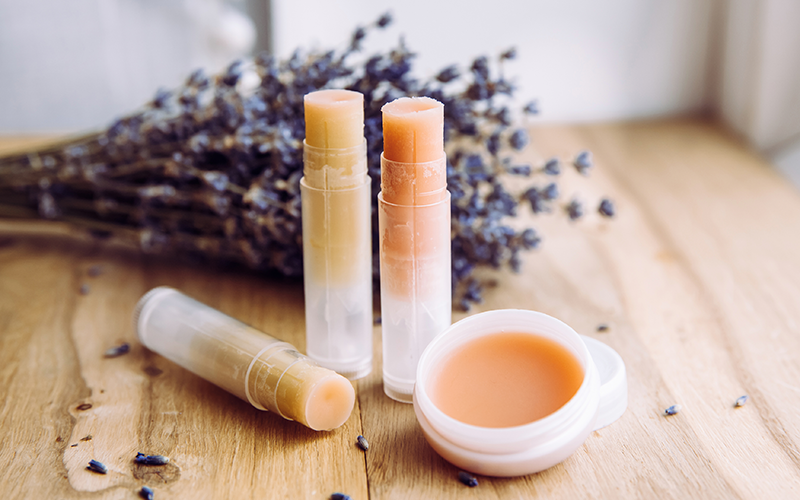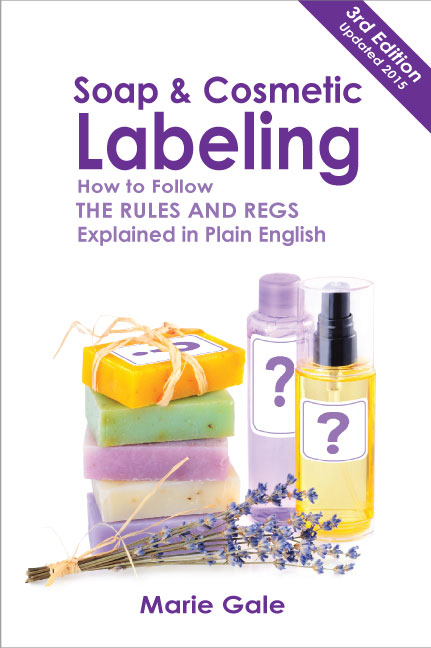I just returned from the 2011 Handcrafted Soapmakers Guild Annual Conference in Miami. It was terrific! This year I went as a speaker and a vendor, and had time to enjoy some of the other speakers and presenters. I loved seeing Barbara Corcoran and had the privilege of having breakfast with her and several of the HSMG directors. Barbara is a fascinating woman, very well-spoken, and quite kind.
My Half-Day seminar on Labeling was attended by about 20 people and I believe they all got a good overview and some hands-on experience reviewing and creating labels. All the information covered is included in my book Soap and Cosmetic Labeling (except for the many anecdotes I have collected over the years about labeling).
Which brings me to the point of this post: drug claims. Many people asked me about what constitutes a “drug claim” and asked me to look at the claims on their labels. Since I’ve come home, I’ve received a few more questions. So here is more information on how a cosmetic can become a drug.
A drug is defined by the FDA as:
Definition of “Drug” from the regulations:
Any product that is intended for use in the cure, mitigation, treatment, or prevention of disease and articles intended to affect the structure or any function of the body.
We all know that there are many ingredients that are beneficial to the body in some way or another; many have been used for centuries in “traditional” healing. The fact that they haven’t been “approved by the FDA” doesn’t mean that they don’t work. Many of us have even made creams, salves, butters, and balms for personal use that were blended with essential oils or herbs to help with sore muscles, sprains, aches, and pains.
However, to make the CLAIM that a product for sale will cure, mitigate, or treat “disease” or affect the structure or function of the body (including relief of sore muscles, sprains, aches, and pains) makes the product a drug (and subject to the FDA and all their many, many, many, many regulations.
Drug Claims
So, what constitutes a drug claim? I went through some of the recent warning letters from the FDA and compiled the following list of examples of drug claims from websites about products and/or product labels. These are all topical products; not food or dietary supplements.
- Lose your wrinkles!
- Vitamin C and E [ingredients in the product] help … protect skin cells from free radical damage
- (Testimonial) Ever since I started using [product] three weeks ago, I have noticed that the wrinkles on my forehead were less deep…
- Rosehip seed oil [an ingredient in the product] contains Vitamin A, which helps to delay the effects of skin aging … and promotes collagen and elastin levels to increase. This results in firmer … skin with greater elasticity
- According to the Centers for Disease Control, ‘In cell cultures, copper complexes cause some types of cancer cells to revert to non-cancerous growth patterns’
- Our formulation is pH balanced to maintain proper delivery of particles into the skin creating a… healing benefit
- Topical Vitamin C protects skin against harm caused by exposure to sunlight…
- Vitamin C has anti-inflammatory benefits which reduce redness and irritation…
- Oxygen is a catalyst and energy source for most cellular functions
- Oxygen is vital for all cells to sustain proper metabolism [product claiming to include oxygen]
- Oxygen has a significant role in wound healing, being essential to provide the additional energy source for the repair process. [product claiming to include oxygen]
- Oxygen is… component of the immune function… component of blood flow… functional element in hormonal mediators… required… during tissue repair process… [product claiming to include oxygen]
- Relief from: cuts, burns, sunburns, abrasion, rash, diaper rash, bug bites, shaving, waxing, and many types of skin irritations
- It is excellent for burns, sunburn, and rashes
- Stops the pain experienced with bikini waxing
- (Testimonial) I had a stubborn outbreak of acne on my chin that persisted for 3 months… The acne seems to just be disappearing…
- Promotes… wound healing and skin conditions such as… eczema and psoriasis.
- Reduces redness
- Millions of men and women suffer the stinging embarrassment of chronic facial redness and flushing…. Now there’s [product]
- (Testimonial) After I tried [product], my face wasn’t lighting on fire anymore.
- [H]elps correct the effects of sun damage on the skin.
- Stimulates the renewal of skin cells
- Witch hazel [an ingredient in the product] eases skin inflammation
- Employing the universal botanical soother aloe vera, this formula provides healing support to worn out skin. Legendary for its ability to help the body recover from injury, aloe actually promotes restoration of the skin, fostering strong ties between your inner skin fibers.
- Helps to calm, relax, and promote restful sleep.
- Helps skin cells renew and repair themselves…
- Bruise Relief
- A patented formulation of essential plant oils proven to kill 99.99% of germs including MRSA, Salmonella, Staph, and E.coli
- [The] active ingredient is a proprietary, fast-acting, broad-spectrum antimicrobial created from a patented blend of natural thyme and other essential plant oils…. The heightened activity and novel combination of oils has proven highly effective at eliminating harmful transient bacteria, while leaving beneficial resident bacteria and soft, healthy skin
- Use: Sanitize hands when you can’t wash with soap and water
Claims about ingredients
You’ll note that in the above lists there are drug claims made about an ingredient in the product (even when the same claim is not made for the product itself). That still constitutes a claim for the product.
Location of claims
Obviously, saying “for treatment of eczema” on the actual label on a container of cream would qualify as a drug claim. What about saying that on the website that sells the product? Yep, drug claim! Having an article on the website written by someone else that talks about the eczema-curing properties of an ingredient in the cream? Yep, that’s a drug claim, too. Putting out a press release on PRwire about the healing properties? Yep, drug claim. (In fact, one of the warning letters I reviewed was the result of a claim made in a press release!)
Lipstick, lip gloss, and lip balm
Lipstick and lip gloss are cosmetics. They are applied to enhance or color the lips and are purely for increasing beauty and attractiveness (the very definition of a “cosmetic”). Lip balms, however, are a different story.
Recently there has been discussion about whether the term “balm” can be used for a cosmetic product, especially a “lip balm.” While I couldn’t find anything about the term “balm” by itself, the term “lip balm” is referenced in FDA regulations.
“Lip balm” (also called “lip protectant”) is considered a drug in the class of “skin protectants.” It can be a cream, gel, lotion, or ointment. The approved claims are: “helps prevent,” “temporarily protects,” or “helps relieve” “chapped or cracked lips,” and optionally, “helps prevent and protect from the drying effects of wind and cold weather.” A lip product which contains sunscreen is also considered a drug under the sunscreen regulations.
In order for a lip balm to qualify as an over-the-counter skin protectant drug, the product must contain at least one of the following:
- Allantoin, 0.5 – 2 percent
- Coca butter, 50 – 100 percent
- Cod liver oil, 5 – 13.56 percent (with restrictions)
- Dimethicone, 1 – 30 percent
- Glycerin, 20 – 45 percent
It wouldn’t be hard to make a product that meets the ingredient requirements for a lip or skin protectant. However, even though you could MAKE it, in order to qualify it as an OTC skin protectant drug (and be able to use the drug claims noted above), the product must be labeled and manufactured as a drug.
The labeling part isn’t so hard, but qualifying as a drug manufacturer means being registered with the FDA as a drug manufacturer, having an inspected facility, and qualifying with all Good Manufacturing Practices at the drug-level standard as specified in the regulations. In other words, don’t try this at home!
Bottom line
The bottom line is that if you are making a cosmetic product, keep your label and all the accompanying materials (the “labeling”) on track to be a cosmetic. Don’t make claims that the product will do ANYTHING other than “cleanse or promote beauty or attractiveness.” Even if you know it will! Be careful about testimonials on your site that make drug claims; even if they aren’t from you, they still count.
Do promote your ingredients; if your product contains arnica and your customer uses it for a sprain or bruise, so be it. But don’t YOU tell them to use it for that!


Leave a Reply